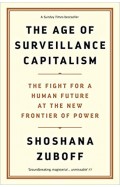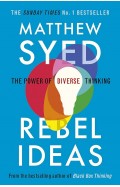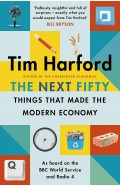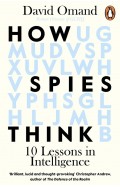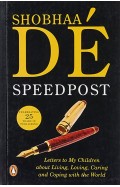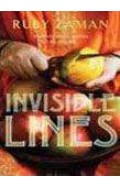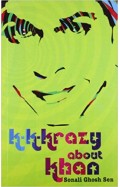- Home
- Urdu Books
- Children's Urdu Books
- Business & Management
- Connectography - Mapping the Future of Global Civilization
Connectography - Mapping the Future of Global Civilization
By: Parag Khanna
-
Rs 896.25
- Rs 1,195.00
- 25%
You save Rs 298.75.
Due to constant currency fluctuation, prices are subject to change with or without notice.
From the visionary bestselling author of The Second World and How to Run the World comes a bracing and authoritative guide to a future shaped less by national borders than by global supply chains, a world in which the most connected powers—and people—will win.
Connectivity is the most revolutionary force of the twenty-first century. Mankind is reengineering the planet, investing up to ten trillion dollars per year in transportation, energy, and communications infrastructure linking the world’s burgeoning megacities together. This has profound consequences for geopolitics, economics, demographics, the environment, and social identity. Connectivity, not geography, is our destiny.
In Connectography, visionary strategist Parag Khanna travels from Ukraine to Iran, Mongolia to North Korea, Pakistan to Nigeria, and across the Arctic Circle and the South China Sea to explain the rapid and unprecedented changes affecting every part of the planet. He shows how militaries are deployed to protect supply chains as much as borders, and how nations are less at war over territory than engaged in tugs-of-war over pipelines, railways, shipping lanes, and Internet cables. The new arms race is to connect to the most markets—a race China is now winning, having launched a wave of infrastructure investments to unite Eurasia around its new Silk Roads. The United States can only regain ground by fusing with its neighbors into a super-continental North American Union of shared resources and prosperity.
Connectography offers a unique and hopeful vision for the future. Khanna argues that new energy discoveries and technologies have eliminated the need for resource wars; ambitious transport corridors and power grids are unscrambling Africa’s fraught colonial borders; even the Arab world is evolving a more peaceful map as it builds resource and trade routes across its war-torn landscape. At the same time, thriving hubs such as Singapore and Dubai are injecting dynamism into young and heavily populated regions, cyber-communities empower commerce across vast distances, and the world’s ballooning financial assets are being wisely invested into building an inclusive global society. Beneath the chaos of a world that appears to be falling apart is a new foundation of connectivity pulling it together.
From the visionary bestselling author of The Second World and How to Run the World comes a bracing and authoritative guide to a future shaped less by national borders than by global supply chains, a world in which the most connected powers—and people—will win.
Connectivity is the most revolutionary force of the twenty-first century. Mankind is reengineering the planet, investing up to ten trillion dollars per year in transportation, energy, and communications infrastructure linking the world’s burgeoning megacities together. This has profound consequences for geopolitics, economics, demographics, the environment, and social identity. Connectivity, not geography, is our destiny.
In Connectography, visionary strategist Parag Khanna travels from Ukraine to Iran, Mongolia to North Korea, Pakistan to Nigeria, and across the Arctic Circle and the South China Sea to explain the rapid and unprecedented changes affecting every part of the planet. He shows how militaries are deployed to protect supply chains as much as borders, and how nations are less at war over territory than engaged in tugs-of-war over pipelines, railways, shipping lanes, and Internet cables. The new arms race is to connect to the most markets—a race China is now winning, having launched a wave of infrastructure investments to unite Eurasia around its new Silk Roads. The United States can only regain ground by fusing with its neighbors into a super-continental North American Union of shared resources and prosperity.
Connectography offers a unique and hopeful vision for the future. Khanna argues that new energy discoveries and technologies have eliminated the need for resource wars; ambitious transport corridors and power grids are unscrambling Africa’s fraught colonial borders; even the Arab world is evolving a more peaceful map as it builds resource and trade routes across its war-torn landscape. At the same time, thriving hubs such as Singapore and Dubai are injecting dynamism into young and heavily populated regions, cyber-communities empower commerce across vast distances, and the world’s ballooning financial assets are being wisely invested into building an inclusive global society. Beneath the chaos of a world that appears to be falling apart is a new foundation of connectivity pulling it together.
How To Run The World Charting A Course To The Next Renaissance -
By: Parag Khanna
Rs 1,046.25 Rs 1,395.00 Ex Tax :Rs 1,046.25
The Future Is Asian: Global Order in the Twenty-first Century
By: Parag Khanna
Rs 1,556.75 Rs 2,395.00 Ex Tax :Rs 1,556.75
Connectography - Mapping the Future of Global Civilization
By: Parag Khanna
Rs 896.25 Rs 1,195.00 Ex Tax :Rs 896.25
Move: How Mass Migration Will Reshape the World – and What It Means for You
By: Parag Khanna
Rs 2,321.25 Rs 3,095.00 Ex Tax :Rs 2,321.25
Zubin Mehta: A Musical Journey (An Authorized Biography)
By: VOID - Bakhtiar K. Dadabhoy
Rs 472.50 Rs 1,050.00 Ex Tax :Rs 472.50
The Age of Surveillance Capitalism: The Fight for a Human Future at the New Frontier of Power
By: Professor Shoshana Zuboff
Rs 1,621.75 Rs 2,495.00 Ex Tax :Rs 1,621.75
Rebel Ideas The Power of Diverse Thinking
By: Matthew Syed
Rs 1,345.50 Rs 1,495.00 Ex Tax :Rs 1,345.50
The Next Fifty Things that Made the Modern Economy
By: Tim Harford
Rs 987.75 Rs 2,195.00 Ex Tax :Rs 987.75
Genius Makers : The Mavericks Who Brought A.I. to Google, Facebook, and the World
By: Cade Metz
Rs 2,271.75 Rs 3,495.00 Ex Tax :Rs 2,271.75
How Spies Think - Ten Lessons in Intelligence
By: David Omand
Rs 2,096.25 Rs 2,795.00 Ex Tax :Rs 2,096.25
Manning Up: How the Rise of Women Has Turned Men into Boys
By: Kay Hymowitz
Rs 646.75 Rs 995.00 Ex Tax :Rs 646.75
The Age of Surveillance Capitalism: The Fight for a Human Future at the New Frontier of Power
By: Professor Shoshana Zuboff
Rs 1,621.75 Rs 2,495.00 Ex Tax :Rs 1,621.75
Rebel Ideas The Power of Diverse Thinking
By: Matthew Syed
Rs 1,345.50 Rs 1,495.00 Ex Tax :Rs 1,345.50
The Next Fifty Things that Made the Modern Economy
By: Tim Harford
Rs 987.75 Rs 2,195.00 Ex Tax :Rs 987.75
Genius Makers : The Mavericks Who Brought A.I. to Google, Facebook, and the World
By: Cade Metz
Rs 2,271.75 Rs 3,495.00 Ex Tax :Rs 2,271.75
How Spies Think - Ten Lessons in Intelligence
By: David Omand
Rs 2,096.25 Rs 2,795.00 Ex Tax :Rs 2,096.25
No recently viewed books available at the moment.
Zubin Mehta: A Musical Journey (An Authorized Biography)
By: VOID - Bakhtiar K. Dadabhoy
Rs 472.50 Rs 1,050.00 Ex Tax :Rs 472.50
How To Run The World Charting A Course To The Next Renaissance -
By: Parag Khanna
Rs 1,046.25 Rs 1,395.00 Ex Tax :Rs 1,046.25
The Future Is Asian: Global Order in the Twenty-first Century
By: Parag Khanna
Rs 1,556.75 Rs 2,395.00 Ex Tax :Rs 1,556.75
Connectography - Mapping the Future of Global Civilization
By: Parag Khanna
Rs 896.25 Rs 1,195.00 Ex Tax :Rs 896.25
Move: How Mass Migration Will Reshape the World – and What It Means for You
By: Parag Khanna
Rs 2,321.25 Rs 3,095.00 Ex Tax :Rs 2,321.25
The Age of Surveillance Capitalism: The Fight for a Human Future at the New Frontier of Power
By: Professor Shoshana Zuboff
Rs 1,621.75 Rs 2,495.00 Ex Tax :Rs 1,621.75
Rebel Ideas The Power of Diverse Thinking
By: Matthew Syed
Rs 1,345.50 Rs 1,495.00 Ex Tax :Rs 1,345.50
The Next Fifty Things that Made the Modern Economy
By: Tim Harford
Rs 987.75 Rs 2,195.00 Ex Tax :Rs 987.75
Genius Makers : The Mavericks Who Brought A.I. to Google, Facebook, and the World
By: Cade Metz
Rs 2,271.75 Rs 3,495.00 Ex Tax :Rs 2,271.75
How Spies Think - Ten Lessons in Intelligence
By: David Omand
Rs 2,096.25 Rs 2,795.00 Ex Tax :Rs 2,096.25











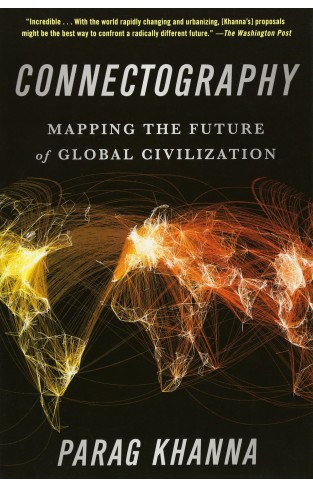
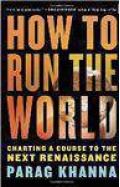
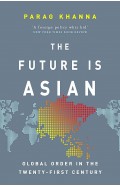
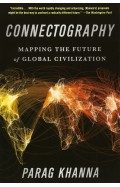
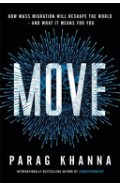
-120x187.jpg?q6)





